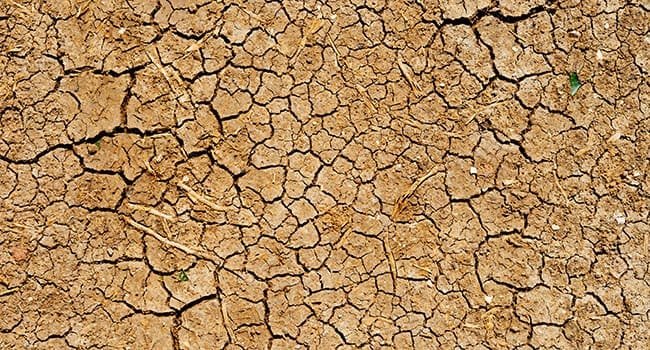 This past March was declared the hottest month since record keeping began in 1880. In fact, 2015, statistically speaking, is the warmest start of any year on record. It’s not surprising, therefore, that things are really heating up around the world, and particularly in California.
This past March was declared the hottest month since record keeping began in 1880. In fact, 2015, statistically speaking, is the warmest start of any year on record. It’s not surprising, therefore, that things are really heating up around the world, and particularly in California.
After enduring its fourth rain-free season, one of the most productive agricultural economies in the world is now struggling from the effects of drought, which in turn affects the entire global food system; what happens to agriculture in “The Golden State” matters to many economies, including Canada.
California produces more than half of the fresh fruits and vegetables grown in the United States, as well as all of the almonds, artichokes, lemons, pistachios, and processed tomatoes. Approximately 10 percent of all California food exports, worth approximately $2 billion, end up in Canada. The quality of the soil and access to affordable, potable water in the State is unmatched. For example, California’s spinach yield is 58 percent more per acre than in the rest of North America, which is why even some Canadian companies have invested in the region. Last year, however, the drought cost over $2 billion, and it is estimated that 17,000 farm workers lost their jobs. More than 400,000 acres were idled due to water scarcity.
As a result, prices for a range of products have risen dramatically: garlic, radishes, carrots, grapefruit, and green onions have seen increases exceeding 40 percent compared to last year. Paradoxically, for California farmers who do have access to water, growing conditions have been ideal. For products such as lettuce, berries, broccoli, grapes, melons, tomatoes, peppers and packaged salads, price increases have been modest. A strong U.S. dollar and lower fuel prices has kept the cost of fruits and vegetables at retail in Canada from spiking. If the severity of the situation continues, however, producers will be eventually forced to scale down their operations.
California-grown fruits and vegetables haven’t been cheap for everyone, though. Foreign food buyers have noticed significant price hikes for many products. For example, in Canada lettuce prices at retail are up more than 20 percent from last year, and strawberries and tomatoes more than 10 percent in some parts of the country. While the strength of our currency certainly has had a positive impact on prices, over time the drought will overtake any savings, as the U.S. works to feed its own citizens first.
The great secret of California’s water crisis is that water is still amazingly affordable in the U.S.; frankly, more than it should be. In Europe, Japan and in many other parts of the world, water is costly and priced accordingly. In America, however, century-old rights with little oversight allow farmers to use water as they need it, even during droughts. In this way, California subsidizes agriculture with its overly diligent water policies.
Indeed, in the U.S., farming to feed its citizens is likely regarded as a moral obligation. In addition, this obligation also supports its exports. To produce its $20 billion worth of food exports, farmers in California use more than 82 trillion gallons of water; knowing that some towns in the Golden State are quite literally running out of water, this is a disturbing state of affairs.
Climatologists are suggesting that California might be experiencing the start of a “mega” drought. If this is the case, there will be widespread implications, even for Canada. The move to adjust the price of water in California to reflect actual conditions is inevitable, and once that happens agriculture in the region won’t be the same. In the long term, California is likely to experience a shift to more efficient irrigation methods that could reduce agricultural water use by more than 20 percent. Improved irrigation systems, like we have in Canada, will allow California to mitigate future risks related to climate change.
In addition, higher input costs will likely trigger a significant movement of California farmers outside the state. To feed the eighth largest economy in the world, food procurement will become more challenging, at which point Californians will inevitably pay more for food. Imports could come from elsewhere in the U.S., and even from Canada. Indeed, supported by a weaker Loonie, the ongoing drought could represent a great opportunity for our agricultural economy.
However, banking only on a lower currency and inexpensive input costs to build our competitive advantage is not enough. The development of innovative products could make this a day dream come true for many Canadian farmers and processors alike. To make this dream come true, however, we would need to be strategic on trades. So un-Canadian . . .
Dr. Sylvain Charlebois is senior director of the agri-food analytics lab and a professor in food distribution and policy at Dalhousie University.
Sylvain is a Troy Media contributor. Why aren’t you?
The views, opinions and positions expressed by columnists and contributors are the author’s alone. They do not inherently or expressly reflect the views, opinions and/or positions of our publication.


